| Unit I: Introduction to Microeconomics | • What is microeconomics?
• Central problems. |
| Unit II: Consumer Behaviour and Demand | • Consumer’s Equilibrium: meaning and attainment of equilibrium through Utility Approach: One and two commodity cases. • Demand: market demand, determinants of demand, demand schedule, demand curve, movement along and shifts in the demand curve, price elasticity of demand, measurement of price elasticity of demand – percentage, total expenditure, and geometric methods. |
| Introductory Macroeconomics |
| Unit III: National Income and Related Aggregates - Basic Concepts and Measurement | • Macroeconomics: meaning. • Circular flow of income, concepts of GDP, GNP, NDP, NNP (at market price and factor cost). • Measurement of National Income –Value Added method, Income method, and Expenditure method. |
| Unit IV: Determination of Income and Employment | • Aggregate demand, aggregate supply, and their components. • Propensity to consume and propensity to save (average and marginal). • Meaning of involuntary unemployment and full employment. • Determination of income and employment: two-sector model. • Concept of investment multiplier and its working. • Problems of excess and deficient demand. |
| • Measures to correct excess and deficient demand – availability of credit, change in government spending. |
| Unit V: Money and Banking | • Money: meaning, evolution, and functions • Central bank: meaning and functions • Commercial banks: meaning and functions. |
| Unit VI: Government Budget and the Economy | • Government budget – meaning and its components • Objectives of government budget • Classification of receipts – revenue and capital; classification of expenditure – revenue and capital, plan and non-plan, and developmental and non-developmental • Balanced budget, surplus |
| budget, and deficit budget: meaning and implications • Revenue deficit, fiscal deficit, and primary deficit: meaning and implications; measures to contain different deficits. |
| Unit VII: Balance of Payments | • Foreign exchange rate – meaning (fixed and flexible), merits and demerits; determination through demand and supply. • Balance of payments accounts – meaning and components. • A brief analysis of recent exchange rate issues. |
| Indian Economic Development |
| Unit VIII: Development Experience (1947-90) and Economic Reforms since 1991 | • A brief introduction of the state of the Indian economy on the eve of independence. Indian economic system and common goals of Five-year plans.
• Main features, problems, and policies of agriculture (institutional aspects and new agricultural strategy), industry (IPR 1956; SSI – role & importance), and foreign trade. |
| Unit IX: Current challenges facing the Indian Economy | Poverty – absolute and relative; Main programs for poverty alleviation: A critical assessment; Human Capital Formation – How many people become resource; Role of human capital in economic development; Rural development: Key issues – credit and marketing – the role of cooperatives; agricultural diversification; Employment: Growth and changes in the workforce participation rate in formal and informal sectors; Infrastructure: Meaning and Types: Cases Studies: Health: Problems and Policies – A critical assessment; Sustainable Economic Development: Meaning, Effects of Economic Development on Resources and Environment, including global warming. |
| Unit X: Development Experience of India | • A comparison with neighbors. • India and Pakistan. • India and China. • Issues: economic growth, population, sectoral development, and other Human Development Indicators. |






